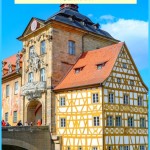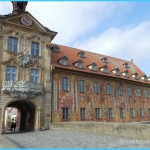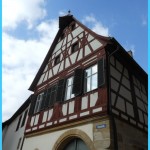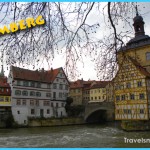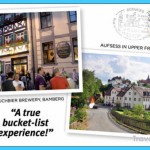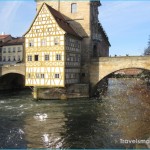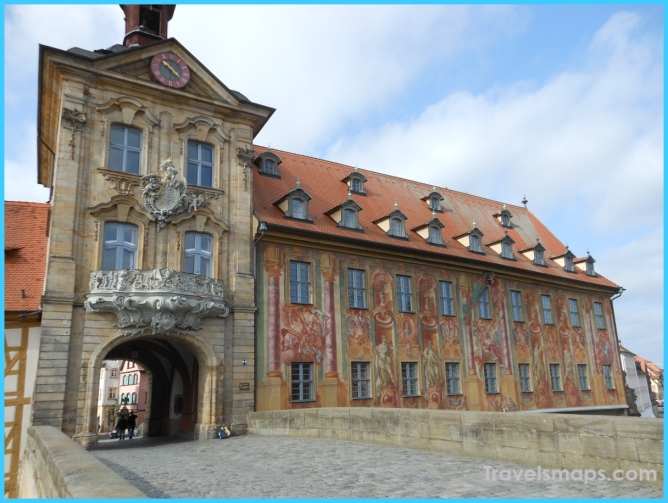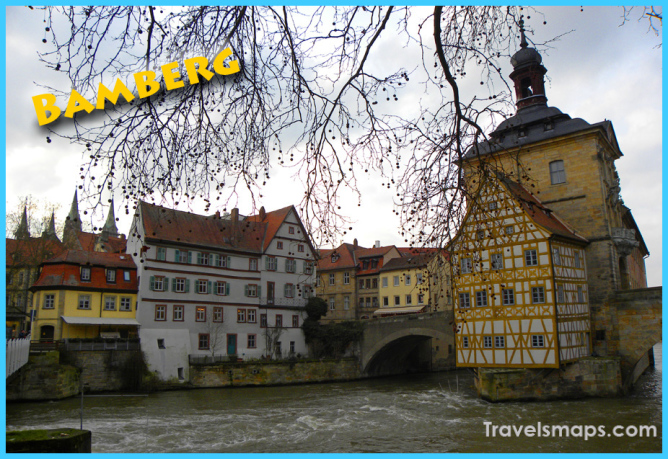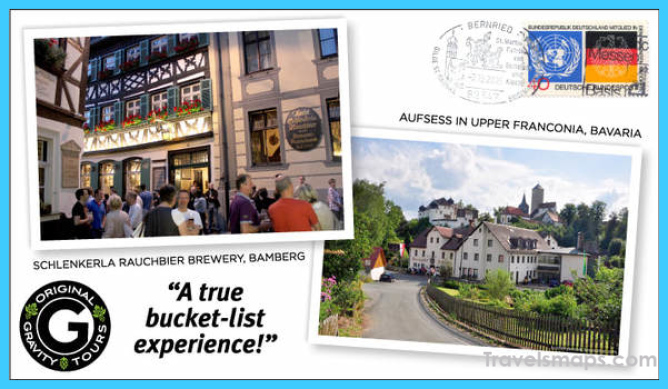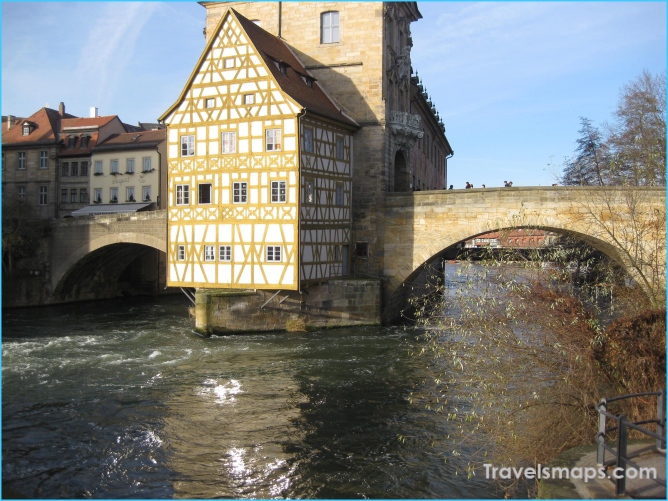
Bamberg has nine breweries in its small town center (or between eight and 11 breweries, depending on who you do and don’t count). While it might be famous for its Rauchbier, a wider variety of beers are also brewed there. Two of the world’s best-known maltsters are in Bamberg: Bamberger Mälzerei and Weyermann’s. The city is within easy access of the hop-growing region of Germany. Kasper Schulz is a 10th-generation family business, which originated as a coppersmiths and now produces some of the world’s top brewhouses. Bamberg really is a beer city.
Visit to Bamberg: the Ultimate Beer City Photo Gallery
For me, it’s the malt that sets Bamberg’s beers apa more than anything else—and this is something you’ll find in many Franconian beers. Overlooking the Rauchbiers, the general pale lagers in the region are more amber in color than those from Munich; they have a rounder, richer malt depth and flavor, a fullness compared to Helles’s light simplicity— Mahr’s Brau’s Ungespundet is a great example of this; it’s a beer that’s full with toasty, sweeter malts, satisfyingly rich, yet still refreshing. The hops are all there, too, and indeed some of Bamberg’s beers stand out for their hop character, including Keesman’s Herren Pils, which is extraordinarily bitter, but otherwise malt is the hea of these beers.
Visit the World’s Oldest Brewery
AND DRINK CLASSIC GERMAN WHEAT BEER
In Freising, 25 miles (40km) north of Munich, there has been a monastery on the hill of Holy St Stephen since the year 725. While beer was probably made there before 1040, this was the year Weihenstephaner officially received the rights to brew beer commercially, allowing them to claim that they are the world’s oldest continually operating brewery.
It hasn’t always been easy for them: the brewery was completely burned down four times; it was destroyed or depopulated by three plagues, several famines, wars, and even a great earthquake, plus the secularization of the monastery in 1803 also caused problems, but through every catastrophe they rebuilt and moved forward and continued to make beer—although the fact that they’ve ceased brewing numerous times does allow other almost-as-old brewers to suggest that Weihenstephaner hasn’t necessarily been brewed continually.
The world’s foremost brewing school is based at the Technical University of Munich and shares Weihenstephaner’s campus, meaning that many of the world’s qualified brewmasters learnt their skills from this brewery. Today you can visit the charming campus, stroll around the leafy grounds, and see the large, yellow brewery on top of the hill. Plus, you can go to the restaurant and drink some beers alongside some hearty German food.
Brewing may have taken place there for a long time, but Weihenstephaner is definitely a modern brewery and the world’s foremost brewer of Hefeweizen—German wheat beer. Their standard Hefe Weissbier is the classic of its type: pale gold, handsomely hazy, with a thick whip of white foam on top, where its distinctive yeast gives you banana, vanilla, and a creamy texture; and it all finishes refreshing and light for the beer’s 5.4% ABV. Ideally, you should arrive early and have the beer with some weisswurst (“white sausage”), served with a pretzel and mustard.
Go to (what is probably, or arguably) the world’s oldest brewery and drink one of the world’s most famous beer styles.
The Lowdown
WHAT: Weihenstephaner Brewery
HOW: Open daily from 10am www.weihenstephaner.de WHERE: Alte Akademie 2, 85354 Freising, Germany
Are There Other Contenders for the Title of World’s Oldest Brewery? 50 miles (80km) north of Freising is Weltenberg Abbey, in Kelheim, a postcard-pretty monastery on the bend of the River Danube. (By the way, if you’re in Kelheim, then this is also home to Schneider-Weiss—like Weihenstephaner, this is another of the world’s great Hefeweizen brewers.) There’s been a Benedictine monastery at Kelheim since 620 and they have brewed beer commercially and continuously there since 1050 (probably making them the oldest monastic brewer in the world). They have a restaurant and beer garden where you should drink their Asam Bock, a rich amber lager with soft, mouth-filling malts, a sweet bready depth, and a long, dry finish.
It’s hard to beat the experience of enjoying beer outside during the Berlin summer.
Maybe You Like Them Too
- Visit To Schlenkerla Tavern, Bamberg Smoking Brews In Beer’s Most Handsome Town
- Drink Craft Beer In Berlin Beer Things To Do In Germany’s Capital City
- Visit to Forchheim’s Annafest THE WORLD’S LARGEST BEER GARDEN

